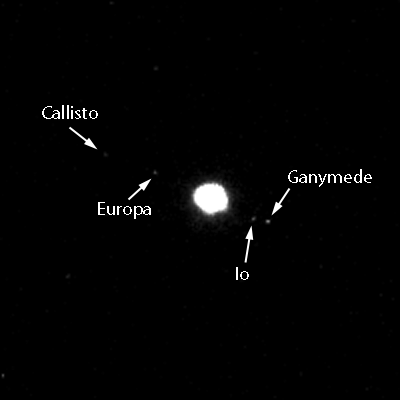Family Portrait (MESSENGER) on:
[Wikipedia]
[Google]
[Amazon]
The ''Solar System Family Portrait'' is an image of many of the  Several moons are visible in the photo, including the Earth's
Several moons are visible in the photo, including the Earth's
NASA ''MESSENGER'' feature
{{DEFAULTSORT:Family Portrait (Messenger) Astronomy image articles Bodies of the Solar System 2010 in science Photographs of Earth from outer space 2010 works 2010s photographs November 2010 events ja:太陽系家族写真#メッセンジャーによる撮影
Solar System
The Solar System Capitalization of the name varies. The International Astronomical Union, the authoritative body regarding astronomical nomenclature, specifies capitalizing the names of all individual astronomical objects but uses mixed "Solar ...
's planets and moons acquired by '' MESSENGER'' during November 2010 from approximately the orbit of Mercury. The mosaic
A mosaic is a pattern or image made of small regular or irregular pieces of colored stone, glass or ceramic, held in place by plaster/mortar, and covering a surface. Mosaics are often used as floor and wall decoration, and were particularly pop ...
is intended to be complementary to the ''Voyager 1''s ''Family Portrait'' acquired from the outer edge of the Solar System on February 14, 1990.
The portrait was constructed using 34 individual frames acquired using the Mercury Dual Imaging System, targeting areas surrounding each planet. The first series of images was acquired on November 3, 2010, and the second on November 16.
Six planets are visible in the mosaic. From left to right: Venus
Venus is the second planet from the Sun. It is sometimes called Earth's "sister" or "twin" planet as it is almost as large and has a similar composition. As an interior planet to Earth, Venus (like Mercury) appears in Earth's sky never f ...
, Earth
Earth is the third planet from the Sun and the only astronomical object known to harbor life. While large volumes of water can be found throughout the Solar System, only Earth sustains liquid surface water. About 71% of Earth's surfa ...
, Jupiter
Jupiter is the fifth planet from the Sun and the largest in the Solar System. It is a gas giant with a mass more than two and a half times that of all the other planets in the Solar System combined, but slightly less than one-thousandth t ...
, Mars
Mars is the fourth planet from the Sun and the second-smallest planet in the Solar System, only being larger than Mercury. In the English language, Mars is named for the Roman god of war. Mars is a terrestrial planet with a thin at ...
, Mercury, and Saturn. Uranus
Uranus is the seventh planet from the Sun. Its name is a reference to the Greek god of the sky, Uranus ( Caelus), who, according to Greek mythology, was the great-grandfather of Ares (Mars), grandfather of Zeus (Jupiter) and father of ...
and Neptune were too small to resolve at this distance (3.0-billion and 4.4-billion kilometers respectively). Careful effort was taken to avoid facing the camera toward the Solar System's central star, the Sun
The Sun is the star at the center of the Solar System. It is a nearly perfect ball of hot plasma, heated to incandescence by nuclear fusion reactions in its core. The Sun radiates this energy mainly as light, ultraviolet, and infrared radi ...
, due to the intense heat at close distance.
 Several moons are visible in the photo, including the Earth's
Several moons are visible in the photo, including the Earth's Moon
The Moon is Earth's only natural satellite. It is the fifth largest satellite in the Solar System and the largest and most massive relative to its parent planet, with a diameter about one-quarter that of Earth (comparable to the width of ...
, and all four Galilean moons: Callisto Callisto most commonly refers to:
*Callisto (mythology), a nymph
*Callisto (moon), a moon of Jupiter
Callisto may also refer to:
Art and entertainment
*''Callisto series'', a sequence of novels by Lin Carter
*''Callisto'', a novel by Torsten Kro ...
, Ganymede, Europa, and Io. Additionally, part of the Milky Way
The Milky Way is the galaxy that includes our Solar System, with the name describing the galaxy's appearance from Earth: a hazy band of light seen in the night sky formed from stars that cannot be individually distinguished by the naked eye. ...
is visible between Neptune and Mars.
Because ''MESSENGER'' does not follow the same orbital plane as the Earth, the cameras on the spacecraft had to point up and down from the ecliptic
The ecliptic or ecliptic plane is the orbital plane of the Earth around the Sun. From the perspective of an observer on Earth, the Sun's movement around the celestial sphere over the course of a year traces out a path along the ecliptic agains ...
to capture all of the planets. This resulted in a curved mosaic.
Although somewhat closer to Earth, a similar so-called family portrait of the Earth, Venus and Mars was taken by the Solar Orbiter
The Solar Orbiter (SolO) is a Sun-observing satellite developed by the European Space Agency (ESA). SolO, designed to obtain detailed measurements of the inner heliosphere and the nascent solar wind, will also perform close observations of th ...
spacecraft on 18 November 2020.
See also
* Family Portrait (Voyager)References
External links
NASA ''MESSENGER'' feature
{{DEFAULTSORT:Family Portrait (Messenger) Astronomy image articles Bodies of the Solar System 2010 in science Photographs of Earth from outer space 2010 works 2010s photographs November 2010 events ja:太陽系家族写真#メッセンジャーによる撮影